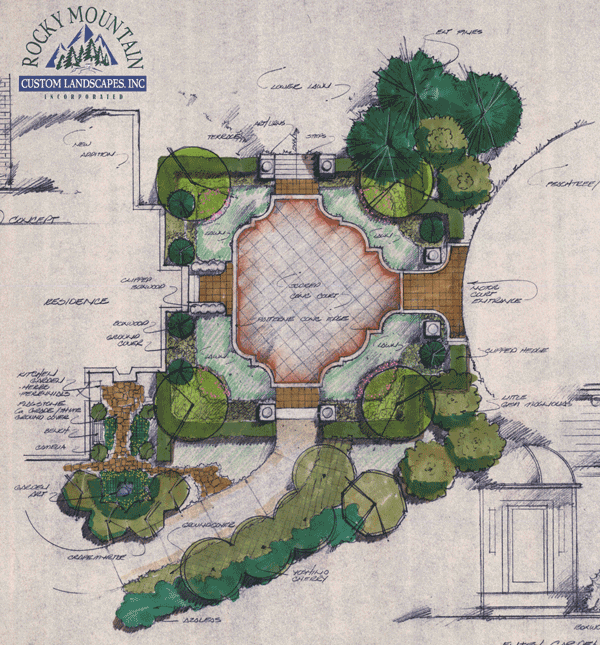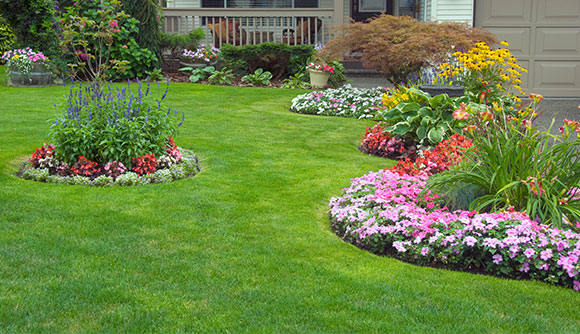Ogden Edge Design Company: Transforming Outdoor Spaces with Aesthetic Landscapes
Ogden Edge Design Company: Transforming Outdoor Spaces with Aesthetic Landscapes
Blog Article
Transforming Your Landscape With Lasting Layout
With the expanding problem for ecological sustainability, numerous home owners are currently looking for methods to change their landscapes right into environment-friendly sanctuaries. Sustainable style not only helps to reduce the adverse influence on the setting yet additionally offers countless advantages for the house owners themselves. By integrating eco-friendly design elements, picking indigenous plants, and carrying out water preservation strategies, one can produce a greener and more lasting landscape. How exactly can one attain this? In this discussion, we will certainly check out the numerous advantages of sustainable landscape design, dive into the ways to include environmentally friendly style components, and share ideas and tricks for keeping a sustainable garden. If you're looking to change your landscape into a lasting sanctuary, keep reviewing to discover the keys to achieving a greener and a lot more environmentally friendly exterior space.
Benefits of Lasting Landscape Design
Lasting landscaping uses numerous advantages for both the environment and homeowner. One of the vital advantages is water conservation. By incorporating drought-tolerant plants and effective watering systems, sustainable landscape design lowers water use considerably. This not only helps to save a valuable source however likewise reduces water bills for residential property proprietors.
An additional benefit of sustainable landscaping is the decrease of chemical use. Standard landscaping typically depends on pesticides and plant foods, which can harm the atmosphere and human health and wellness. In comparison, sustainable landscaping techniques prioritize natural pest control methods and natural fertilizers, decreasing the demand for unsafe chemicals.

Last but not least, sustainable landscaping can raise residential or commercial property value. A properly designed lasting landscape not just enhances the aesthetic allure of a home yet likewise demonstrates a commitment to ecological duty. This can attract prospective customers and tenants that value sustainable methods, leading to higher residential or commercial property need and worth.
Integrating Eco-Friendly Layout Aspects
By incorporating green style elements, residential or commercial property owners can improve the sustainability of their landscapes while decreasing their environmental effect. Environmentally friendly layout components focus on using resources successfully, lowering waste, and promoting biodiversity. One crucial element is water preservation. Mounting rain harvesting systems and making use of drip watering can considerably decrease water usage. Native plants need to likewise be focused on in landscape style, as they are adapted to the local climate and call for much less water and maintenance. Additionally, including lasting materials is crucial. Making use of recycled or reclaimed products for hardscaping not just lowers waste however also adds an one-of-a-kind visual to the landscape. An additional vital component is power efficiency. Mounting solar-powered lights or utilizing low-energy LED lights can reduce energy intake. Last but not least, developing habitat for wildlife is a vital environment-friendly style aspect. By consisting of functions such as bird feeders, insect hotels, and indigenous plantings, property owners can draw in and support a varied variety of wildlife. Integrating these environmentally friendly layout aspects not only profits the atmosphere but likewise develops a lovely and sustainable landscape for residential or commercial property owners to appreciate.
Deciding On Native Plants for a Sustainable Garden
When creating a lasting yard, one crucial element to think about is the option of native plants. Indigenous plants are those that naturally take place in a particular region or environment and have adapted to the neighborhood environment, dirt conditions, and wild animals. By picking indigenous plants for your yard, you can produce a sustainable and low-maintenance landscape that benefits both the atmosphere and the regional community.
Indigenous plants have actually evolved gradually to be well-suited to the regional conditions, making them a lot more resistant and much less depending on chemicals, fertilizers, and too much watering. They likewise provide habitat and food resources for local wildlife, such as , butterflies, and birds, which are necessary for pollination and biodiversity.
When picking indigenous plants for your garden, it is very important to take into consideration elements such as sunshine demands, dirt type, and water requirements. Speaking with and looking into with neighborhood nurseries or horticulture specialists can aid you identify the indigenous plants that are best suited for your certain place.
In addition to their ecological advantages, native plants can also add appeal and variety to your yard. They are available in a variety of dimensions, shades, and shapes, permitting you to create a unique and visually appealing landscape.
Water Preservation Methods for a Greener Landscape
To produce a more lasting and environmentally-friendly garden, carrying out water conservation strategies is necessary Discover More Here for a greener landscape. Water is a valuable resource, and as our population grows and climate modification intensifies, it ends up being significantly crucial to preserve water in our landscapes.
One effective water conservation method is using mulch. Applying a layer of compost around plants and in garden beds assists to keep moisture in the dirt, decreasing the need for frequent watering. Mulch likewise assists to subdue weed growth, which can compete with plants for water.
One more method is making use of drip irrigation systems. Unlike conventional lawn sprinkler that spray water right into the air, drip irrigation delivers water straight to the origins of plants, minimizing dissipation and water waste. Leak watering systems can be conveniently mounted and gotten used to meet the details water demands of different plants.
Rain harvesting is another useful technique for water preservation. By accumulating rain from downspouts, roofing systems, and rain gutters, you can keep it in barrels or tanks for later usage in sprinkling your yard. This not only decreases the need for metropolitan water but likewise makes certain that rain, a free and all-natural source, is placed to good use.
Finally, appropriate upkeep of irrigation systems is vital for water conservation (Ogden Edge Design Company). Frequently evaluating and repairing any leaks or damaged lawn sprinkler heads can stop water loss and guarantee that water is being utilized successfully
Keeping a Sustainable Garden: Tips and Techniques
Carrying out correct upkeep techniques is crucial for maintaining a sustainable yard. By adhering to a couple of suggestions and methods, you can guarantee that your garden stays healthy, dynamic, and eco-friendly.
Among the most vital facets of maintaining a sustainable yard appertains watering. By sprinkling your plants deeply and much less frequently, you can motivate deep root development and minimize water waste. Additionally, utilizing a drip irrigation system or rainwater harvesting can better preserve water resources.
Routine weeding is another critical maintenance method. Weeds take on your plants for nutrients and water, so it is essential to eliminate them quickly. Think about using natural compost to reduce weed development and maintain moisture in the dirt.
Composting is a superb way to reuse natural waste and improve your garden dirt. By creating a compost stack, you can transform cooking area scraps, yard trimmings, and other organic products right into nutrient-rich garden compost. This will certainly not only reduce waste yet also enhance dirt wellness and fertility.

Routine trimming and correct plant care are also essential for maintaining a lasting yard. Trimming assists promote healthy and balanced growth, enhance air flow, her response and avoid the spread of conditions. Furthermore, supplying sufficient sunshine, dirt nutrients, and defense from severe weather will certainly assist your plants flourish.
Final Thought
To conclude, lasting design in landscaping offers home various advantages, such as saving natural resources, decreasing contamination, and producing a healthier setting. By including eco-friendly design elements and choosing indigenous plants, individuals can develop a lasting garden that supports neighborhood biodiversity and requires less maintenance. Carrying out water conservation strategies better adds to a greener landscape. In general, preserving a lasting yard needs careful planning and continuous dedication, but the rewards are well worth the effort.
By integrating environmentally friendly layout components, choosing native plants, and applying water conservation strategies, one can develop a greener and much more sustainable landscape. In this conversation, we will certainly explore the various advantages of sustainable landscaping, dive right into the ways to integrate eco-friendly layout aspects, and share suggestions and techniques for maintaining a lasting yard. By incorporating drought-tolerant plants and effective watering systems, lasting landscaping decreases water use significantly. By choosing indigenous plants for your garden, you can produce a low-maintenance and sustainable landscape that benefits both the environment and the regional community.
By including environment-friendly design aspects and selecting indigenous plants, people can develop a lasting yard that supports regional biodiversity and requires less maintenance.
Report this page